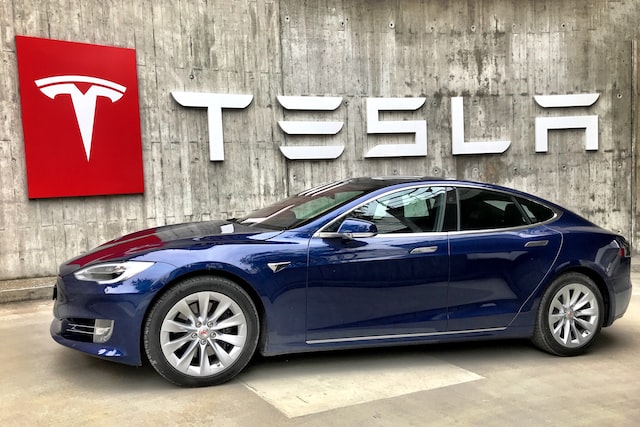Before we get into the specifics of Tesla, let’s understand competitor analysis. Competitor analysis is a strategic research method companies use to identify, evaluate, and understand their current and potential competitors within the market. It’s an essential business strategy component and instrumental in understanding the industry landscape.
The process usually involves the following steps:
- Identifying Key Competitors: The first step is to identify who your competitors are. These may be direct competitors (those who offer the same or similar products or services as you) or indirect competitors (those who provide different products or services but compete for the same consumer dollar).
- Analyzing Competitors’ Strategies and Objectives: Once competitors are identified, the next step is to understand their business strategies and objectives. This may involve analyzing their marketing materials, financial performance, customer reviews, or any public information available about the company.
- Assessing Competitors’ Strengths and Weaknesses: This step involves evaluating the identified competitors’ strengths and weaknesses. Strengths include unique products or services, strong brand recognition, and superior customer service. Weaknesses include poor product quality, weak customer service, or high prices.
- Understanding Competitors’ Products/Services: Understanding what your competitors offer and how your products or services compare is important. This could involve looking at features, quality, pricing, customer service, and marketing strategies.
- Observing Competitors’ Reaction Patterns: Some companies react more aggressively than others when faced with competition. Understanding these patterns lets you predict how these companies might respond to your business strategies.
- Drawing Conclusions and Formulating Strategy: The final step is to take all the information gathered from the analysis, draw meaningful conclusions, and use those to formulate or adjust your business strategies.
The main goal of a competitor analysis is to understand the competitive landscape, spot opportunities and threats, and position your company most advantageously. It helps to inform strategic decisions, from product development to marketing and sales efforts. Now, let’s do a competitor analysis of Tesla.
Here is the competitor analysis of Tesla
Tesla faced competition from various automotive manufacturers in the electric vehicle (EV) sector. Here’s an overview of some of the key competitors:
- Traditional Automotive Manufacturers:
- General Motors (GM): GM has been investing heavily in EV technology and announced plans to launch various electric models across their brands. They’ve set ambitious targets for electrifying their vehicle lineup.
- Ford: Ford has also stepped up its EV game with vehicles like the Mustang Mach-E and the electric version of its best-selling F-150 truck, the F-150 Lightning.
- Volkswagen Group: Volkswagen has been aggressively pursuing the EV market with its ID series of electric cars. The company aims to become a major player in the electric mobility space.
- BMW: BMW has been expanding its electric lineup, including the i3, i4, and iX3.
- Dedicated EV Manufacturers:
- NIO: A Chinese electric car manufacturer seen as a direct competitor to Tesla in China. NIO offers several electric vehicles and is known for its battery-swapping technology.
- Lucid Motors: An American EV manufacturer that focuses on high-end electric cars. Lucid Air, their luxury sedan, has been noted for its range and performance.
- Rivian: Rivian focuses on electric trucks and SUVs, a segment that is also targeted by Tesla with its Cybertruck. Rivian’s R1T pickup and R1S SUV have been well-received for their capabilities and design.
- XPeng: Another Chinese EV manufacturer offering vehicles with advanced technology and competitive pricing
How do Tesla and Traditional Automotive Manufacturers compete?
- Innovation and Technology Leadership: Tesla has been a pioneer in the EV market, known for its cutting-edge technology, particularly in battery technology, electric powertrain efficiency, and autonomous driving features. Traditional automakers are investing heavily to catch up in these areas, but Tesla often remains a step ahead in terms of technology and innovation.
- Brand Image: Tesla has cultivated a strong brand image associated with sustainability, innovation, and high performance. This contrasts with traditional automakers, who may carry a legacy image associated with internal combustion engines. However, these conventional manufacturers are working to rebrand themselves as environmentally conscious and technologically advanced.
- Vehicle Range and Performance: Tesla’s vehicles are known for their long range and high performance, which have been major selling points. Traditional automakers strive to match or exceed Tesla’s benchmarks in these areas with their new EV offerings.
- Charging Infrastructure: Tesla’s Supercharger network is a significant advantage, providing widespread, fast, and exclusive charging solutions for Tesla owners. Traditional automakers either develop their networks, like Ford’s collaboration with the Electrify America network or rely on third-party providers.
- Production Scale and Experience: While Tesla has rapidly scaled production, traditional automakers have decades of experience in mass vehicle production and supply chain management. They can leverage this experience to scale up EV production potentially more efficiently.
- Market Segmentation: Initially, Tesla focused on the luxury car segment but has since moved into more affordable segments with models like the Model 3. Traditional automakers can offer various vehicles across different segments, including budget, luxury, SUVs, trucks, etc.
- Dealer Networks and After-Sales Service: Traditional automakers have extensive dealer networks and established after-sales service infrastructures, which Tesla is still developing. This can be a significant advantage in vehicle sales, servicing, and customer support.
- Global Reach: Traditional automakers have a robust global presence and brand recognition. Tesla is expanding globally but is still establishing its presence in many markets where traditional manufacturers have been operating for decades.
In summary, while Tesla leads in several areas, especially in technology and brand perception as an EV leader, traditional automakers are rapidly evolving, leveraging their extensive experience, resources, and global reach to compete effectively in the growing EV market.
How do Tesla and Dedicated EV Manufacturers compete?
- Brand Recognition and Market Presence: Tesla, being one of the first movers in the EV market, has established significant brand recognition and a loyal customer base. This brand strength is a key competitive advantage over other dedicated EV manufacturers, often newer entrants to the market and still building their brand and customer base.
- Technology and Innovation: Tesla is known for its innovation, particularly in battery technology, electric powertrain efficiency, and autonomous driving features. Other dedicated EV manufacturers like NIO, Lucid Motors, and Rivian also focus heavily on innovation, but each brings its unique strengths. For example, NIO offers battery-swapping technology, Lucid Motors emphasizes luxury and high performance, and Rivian targets the adventure and outdoor segment with its electric trucks and SUVs.
- Vehicle Range and Performance: Tesla’s vehicles are renowned for their long-range and performance capabilities. Other dedicated EV manufacturers compete by offering cars with comparable or sometimes superior range and performance metrics. For instance, the Lucid Air has been noted for its impressive range that challenges Tesla’s models.
- Pricing and Market Segments: Tesla has models across different price ranges, including the more affordable Model 3, but other dedicated EV manufacturers target various market segments. Some, like Lucid Motors, target the higher-end luxury market, while others may focus on more affordable segments or specific niches like electric trucks or SUVs.
- Charging Infrastructure: Tesla’s proprietary Supercharger network is a significant advantage for Tesla vehicle owners. Other EV manufacturers rely on third-party charging networks, which are becoming more widespread but may offer a different level of convenience and coverage than the Supercharger network.
- Production and Scalability: Tesla has significantly ramped up its production capabilities. Other dedicated EV manufacturers are at different stages of their production scale-up. Their ability to efficiently increase production while maintaining quality is critical to their competition with Tesla.
- Autonomous Driving Technology: Tesla has invested heavily in developing its Autopilot and Full Self-Driving (FSD) capabilities. Other EV manufacturers are also developing autonomous driving technologies, either in-house or through partnerships, to compete in this increasingly important area.
- Global Expansion: Tesla has a growing global presence, with production facilities in the US and China, and plans for more. Other dedicated EV manufacturers are also eyeing global expansion, but their market reach varies significantly.
In summary, while Tesla is leading in the EV market, other dedicated EV manufacturers present strong competition through their unique value propositions, targeted market segments, and technological innovations. This competition is driving rapid advancements in the EV sector and offering more choices to consumers.











